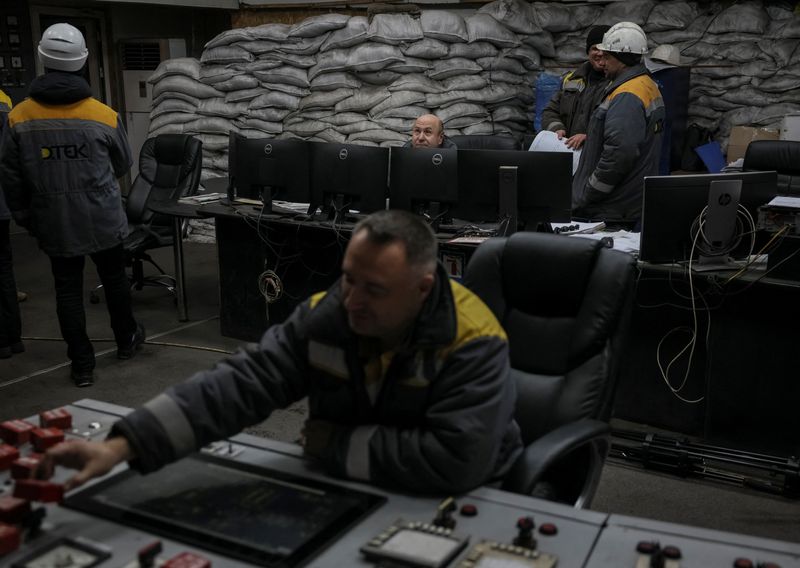By Tom Balmforth
(Reuters) – As Russian missiles barrel toward Ukraine’s power plant and workers rush to the shelter, a handful of workers remain above ground in a control room, protected by sandbags, to manually keep the system running.
The facility, whose location energy officials have asked Reuters not to identify for security reasons, was hit by missiles this year in an airstrike on the power grid that Russia renewed this month as the third winter of the war arrived.
“If there are attacks, we stay here even though we know there are missiles coming towards us… Saying that we are not afraid is not true, because we are all living, normal people and we are afraid,” says the 52 year old Serhii. , a shift leader who has worked at the factory for more than 30 years.
Outside the control center is a huge engine room with holes in the walls and extensive damage from rocket attacks, the most recent of which occurred at this facility on November 17.
The smell of fire hung in the air during a recent Reuters visit, as water dripped from a damaged roof.
Missile parts littered the floor, twisted metal plates were piled to the side, and broken pieces of equipment were strewn about. Workers in grimy overalls were making repairs and climbing over a damaged drive unit.
Serhii, who declined to give his last name, and his colleagues see themselves as on the front lines of a crucial battle in the 33-month war with Russia – to provide power to millions of people despite the attacks.
Russia, which denies targeting civilian infrastructure but sees Ukraine’s energy system as a legitimate target in its war, has wreaked havoc on energy facilities since it began a wave of attacks on the power grid in the spring.
The facility is one of five remaining thermal power plants owned by DTEK, Ukraine’s largest private energy supplier, which provided a quarter of the country’s electricity needs before Moscow’s invasion in February 2022.
In addition to the location, DTEK asked Reuters not to make public certain details about the plant, including the amount of electricity it currently produces, because such information could help Russia carry out future strikes.
The facility, which typically provides electricity and heating to hundreds of thousands of people, has been undergoing major repairs for much of the year. The November attacks prompted more urgent repair work.
“We were delayed by six months,” said Oleksandr, 52, a senior employee at the factory.
‘WINTER WILL NOT BE EASY’
Russia launched its second major attack on Ukraine’s energy infrastructure on Thursday, causing major power outages across the country.
After the two waves of attacks, the outlook for Ukraine’s energy network has deteriorated at a volatile time in the war, with Russian forces advancing in the east and Donald Trump preparing to invade the White House on January 20.
Ukraine repaired some of its energy infrastructure that was under strain in the spring and summer, putting it in an unexpectedly strong position for the approaching winter, industry sources said.
But now they say the damage caused on November 17 and 28 has set them back significantly, raising the prospect of long power outages and other disruptions in the dead of winter. Temperatures are already hovering around 0 degrees Celsius (32 Fahrenheit).
One industry source said that despite the setbacks, Ukraine would be able to overcome the looming challenges.

Workers interviewed by Reuters at the factory said they would do their best.
“This is our front, some guys have a front in the east, our front is here. Our task is to ensure that our Ukraine has electricity, that it is fully functioning,” Serhii said.


